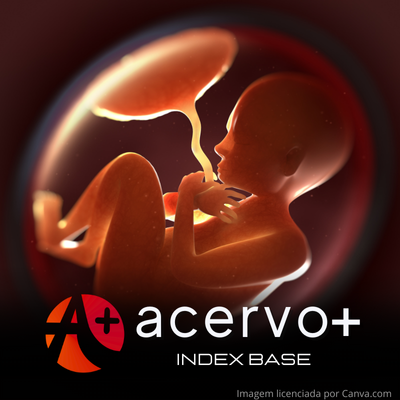O impacto do descolamento prematuro de placenta na morbimortalidade materno-fetal
##plugins.themes.bootstrap3.article.main##
Resumo
Objetivo: Analisar a incidência, os fatores de risco e as principais complicações maternas e fetais associadas ao descolamento prematuro da placenta (DPP). Revisão bibliográfica: O DPP é uma condição obstétrica grave, potencialmente fatal, que pode resultar em complicações significativas para a mãe e o feto. Entre os principais fatores de risco destacam-se a hipertensão materna, o tabagismo e antecedentes obstétricos prévios. A fisiopatologia envolve a formação de hematomas retroplacentários, comprometendo a oxigenação fetal e podendo levar à hipóxia. O diagnóstico é baseado em achados clínicos e exames de imagem, sendo essencial para um manejo obstétrico eficaz. Entre as complicações mais comuns estão hemorragia materna, sofrimento fetal e parto prematuro. Considerações finais: A identificação precoce dos fatores predisponentes e a adoção de estratégias de intervenção adequadas são fundamentais para reduzir as complicações do DPP. O acompanhamento pré-natal e a assistência obstétrica especializada desempenham um papel crucial na minimização da morbimortalidade materno-fetal.
##plugins.themes.bootstrap3.article.details##
Copyright © | Todos os direitos reservados.
A revista detém os direitos autorais exclusivos de publicação deste artigo nos termos da lei 9610/98.
Reprodução parcial
É livre o uso de partes do texto, figuras e questionário do artigo, sendo obrigatória a citação dos autores e revista.
Reprodução total
É expressamente proibida, devendo ser autorizada pela revista.
Referências
2. ANANTH CV, et al. Ischemic placental disease and risks of perinatal mortality and morbidity and neurodevelopmental outcomes. Seminars in perinatology, 2014; 38(3): 151–158.
3. ANANTH CV, et al. Maternal cardiovascular and cerebrovascular health after placental abruption: A systematic review and meta-analysis (CHAP-SR). American journal of epidemiology, 2021; 190(12): 2718–2729.
4. ANANTH CV, et al. Severe placental abruption: clinical definition and associations with maternal complications. American Journal of Obstetrics & Gynecology, 2016; 214: 272.
5. BĄCZKOWSKA M, et al. Molecular changes on maternal-fetal interface in placental abruption-A systematic review. International journal of molecular sciences, 2021; 22(12): 6612.
6. BRANDT JS, et al. Placental abruption at near-term and term gestations: pathophysiology, epidemiology, diagnosis, and management. American Journal of Obstetrics & Gynecology, 2023; 228(5): 1313-1329.
7. DOWNES KL, et al. Maternal, Labor, Delivery, and Perinatal Outcomes Associated with Placental Abruption: A Systematic Review. American Journal of Perinatology, 2017; 34: 935–957.
8. ELKAFRAWI D, et al. Risk Factors for Neonatal/Maternal Morbidity and Mortality in African American Women with Placental Abruption. Medicina, 2020; 56: 174.
9. FADL SA, et al. Placental abruption and hemorrhage-review of imaging appearance. Emergency radiology, 2019; 26(1): 87–97.
10. GONEN N, et al. Placental histopathology and pregnancy outcomes in “early” vs. “late” placental abruption. Reproductive sciences, 2021; 28(2): 351–360.
11. KAYABASOGLU F, et al. Emergency peripartum hysterectomy in a tertiary Istanbul hospital. Archives of Gynecology and Obstetrics, 2008; 278: 251–256.
12. LI Y, et al. Analysis of 62 placental abruption cases: Risk factors and clinical outcomes. Taiwanese journal of obstetrics & gynecology, 2019; 58(2): 223–226.
13. NGOM PM, et al. Management and maternal-fetal prognosis of placental abruption: A retrospective study of 130 cases. Open journal of obstetrics and gynecology, 2022; 12(7): 590–598.
14. OLTEAN I, et al. The association of placental abruption and pediatric neurological outcome: A systematic review and meta-analysis. Journal of clinical medicine, 2022; 12(1): 205.
15. PARIENTE G, et al. Placental abruption and long-term neurological hospitalisations in the offspring. Paediatric and perinatal epidemiology, 2019; 33(3): 215–222.
16. RIIHIMÄKI, O. et al. Placental abruption and child mortality. Pediatrics, 2018; 142(2).
17. SANTOS VC, et al. Fatores associados à mortalidade materna por descolamento prematuro da placenta na gestação. Revista Eletrônica Acervo Saúde, 2023; 23: 13756.
18. SELIGMAN RA, et al. Placental Abruption: Pathophysiology, Clinical Features, Diagnosis, and Consequences. Obstetrics and Gynecology Clinics of North America, 2017; 44(1): 49-63.
19. TIKKANEN M. Placental abruption: epidemiology, risk factors and consequences. Acta Obstet Gynecol Scand, 2011; 90: 140-149.
20. TWEDDELL SM, et al. Placental abruption and neonatal anemia. Journal of Perinatology, 2023; 43: 782–786.
21. WHITE A, et al. Transfusion and hematologic indices in cases of stillbirth due to placental abruption. American Journal of Obstetrics and Gynecology, 2023; 229: 677-1–677.
22. ZHANG JT, et al. Risks of Placental Abruption and Preterm Delivery in Patients Undergoing Assisted Reproduction. JAMA Network Open, 2024; 7(7): 2420970.

